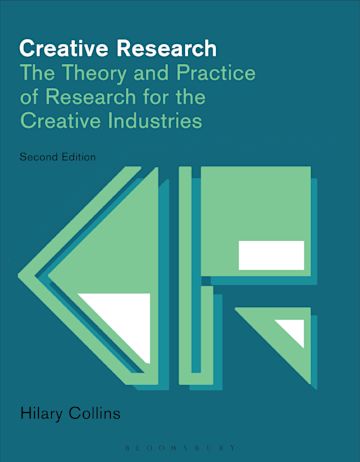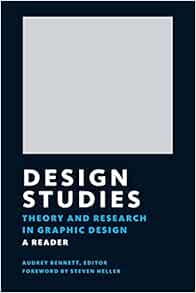
For further help see our Literature Review Online Reading List.
This engaging guide by bestselling author Bryan Greetham takes students step-by-step through the process of writing a literature review, and equips them with practical strategies to help them navigate each stage. Each bite-sized chapter focuses on a specific aspect of the process, from generating ideas and pinning down the research problem through to searching for sources, citing references and planning, writing and editing the review. Chapters feature examples and exercises to help students apply ideas to their own work. Whether your students are writing a stand-alone review or one that is part of a dissertation or thesis, this guide is their essential companion.
Graduate students who turn in exceptional literature reviews are recognized as excellent critical thinkers, as well as masters of academic argumentation, research writing and writing academic papers. But literature searches and composing the review itself can be intimidating and frustrating. The six-step process pioneered by this book has made the task flowing and seamless for masters and doctoral candidates in Education and related fields.
This Second Edition of Diana Ridley's bestselling guide to the literature review provides a step-by-step guide to conducting a literature search and literature review, and guides the reader in how to write up a literature review as part of a PhD thesis or Masters dissertation.
"An excellent and accessible text that will help all students and scholars to develop a strong review and enable them to outline and analyse the key ideas for their study".
Frequently students confuse literature reviews with summaries of existing research, and they can easily get overwhelmed by the amount of material they have to consider and filter as part of their review. Likewise, they don't often realize that a considered, planned, structured and balanced argument forms the bedrock of a successful research project. Outlining what a literature review is - and isn't - and showcasing how to use the literature to your advantage to construct a strong academic argument, this Little Quick Fix answers important questions like - What is the purpose of a literature review? - How can I tell the difference between an argument and an academic argument? - What do I need to create my argument? - What do I need from an article to support my argument? - How do I create a counterargument? - How can I make sure I'm creating a strong argument and plausible counterargument? - How can I win my argument? Students need help over hurdles at every stage of their research project.

Animation Magazine is an American magazine and website covering the animation industry and education, as well as visual effects.

Animation Practice, Process & Production is a double-blind peer-reviewed journal presenting, analysing and exploring how animation is created and shown.

Games and Culture is a peer-reviewed and published quarterly, is an international journal that promotes innovative theoretical and empirical research about games and culture within interactive media.

3D World is a magazine and website whose main focus is 3D animation, visual effects, videogame design, illustration and architectural visualisation.

Computer Animation and Virtual Worlds is the first journal to address the global thematic of the Virtual Worlds.
 Creative research : the theory and practice of research for the Creative Industries
by
Academic research in design can seem daunting - let Hilary Collins show you the building blocks of a great final project. The perfect companion for a research project in fashion, design or visual communication, this 2nd edition of Creative Research walks you through:· Choosing a topic· Deciding your approach· Using previous research and writing a literature review· Obtaining your own data and using it appropriatelyUseful case studies show best practice, revealing the links between a researcher's choice of method and the conclusions they draw. Packed with advice on how to manage your time and structure your project effectively, this edition also includes new sections on design thinking and ethnography.Collins marries theory and practice from start to finish, showing you everything you need to confidently embark on your creative research project.
Creative research : the theory and practice of research for the Creative Industries
by
Academic research in design can seem daunting - let Hilary Collins show you the building blocks of a great final project. The perfect companion for a research project in fashion, design or visual communication, this 2nd edition of Creative Research walks you through:· Choosing a topic· Deciding your approach· Using previous research and writing a literature review· Obtaining your own data and using it appropriatelyUseful case studies show best practice, revealing the links between a researcher's choice of method and the conclusions they draw. Packed with advice on how to manage your time and structure your project effectively, this edition also includes new sections on design thinking and ethnography.Collins marries theory and practice from start to finish, showing you everything you need to confidently embark on your creative research project.
 Design studies theory and research in graphic design
by
"Design Studies", a collection of 27 essays from an international cast of top design researchers, sets out to mend this schism between research and practice.
Design studies theory and research in graphic design
by
"Design Studies", a collection of 27 essays from an international cast of top design researchers, sets out to mend this schism between research and practice.
 Research methods in theatre and performance
by
How have theatre and performance research methods and methodologies engaged the expanding diversity of performing arts practices? How can students best combine performance/theatre research approaches in their projects? This book's 29 contributors provide hands-on answers to such questions. Challenging and debating received research wisdom and exploring innovative procedures for rigorous enquiry via archives, technology, practice-as-research, scenography, performer training, applied theatre/performance, body in performance and more, they create a focussed compendium of future research options.
Research methods in theatre and performance
by
How have theatre and performance research methods and methodologies engaged the expanding diversity of performing arts practices? How can students best combine performance/theatre research approaches in their projects? This book's 29 contributors provide hands-on answers to such questions. Challenging and debating received research wisdom and exploring innovative procedures for rigorous enquiry via archives, technology, practice-as-research, scenography, performer training, applied theatre/performance, body in performance and more, they create a focussed compendium of future research options.
 The Routledge companion to design research
by
The Routledge Companion to Design Research offers a comprehensive examination of design research, celebrating the plurality of design research and the wide range of conceptual, methodological, technological and theoretical approaches evident in contemporary design research. This volume comprises 39 original and high quality design research chapters from contributors around the world, with offerings from the vast array of disciplines in and around modern design praxis, including areas such as industrial and product design, visual communication, interaction design, fashion design, service design, engineering and architecture. The Companion is divided into five distinct sections with chapters that examine the nature and process of design research, the purpose of design research, and how one might embark on design research. They also explore how leading design researchers conduct their design research through formulating and asking questions in novel ways, and the creative methods and tools they use to collect and analyse data. The Companion also includes a number of case studies that illustrate how one might best communicate and disseminate design research through contributions that offer techniques for writing and publicising research. The Routledge Companion to Design Research will have wide appeal to researchers and educators in design and design-related disciplines such as engineering, business, marketing, computing, and will make an invaluable contribution to state-of-the-art design research at postgraduate, doctoral, and post-doctoral levels and teaching across a wide range of different disciplines.
The Routledge companion to design research
by
The Routledge Companion to Design Research offers a comprehensive examination of design research, celebrating the plurality of design research and the wide range of conceptual, methodological, technological and theoretical approaches evident in contemporary design research. This volume comprises 39 original and high quality design research chapters from contributors around the world, with offerings from the vast array of disciplines in and around modern design praxis, including areas such as industrial and product design, visual communication, interaction design, fashion design, service design, engineering and architecture. The Companion is divided into five distinct sections with chapters that examine the nature and process of design research, the purpose of design research, and how one might embark on design research. They also explore how leading design researchers conduct their design research through formulating and asking questions in novel ways, and the creative methods and tools they use to collect and analyse data. The Companion also includes a number of case studies that illustrate how one might best communicate and disseminate design research through contributions that offer techniques for writing and publicising research. The Routledge Companion to Design Research will have wide appeal to researchers and educators in design and design-related disciplines such as engineering, business, marketing, computing, and will make an invaluable contribution to state-of-the-art design research at postgraduate, doctoral, and post-doctoral levels and teaching across a wide range of different disciplines.